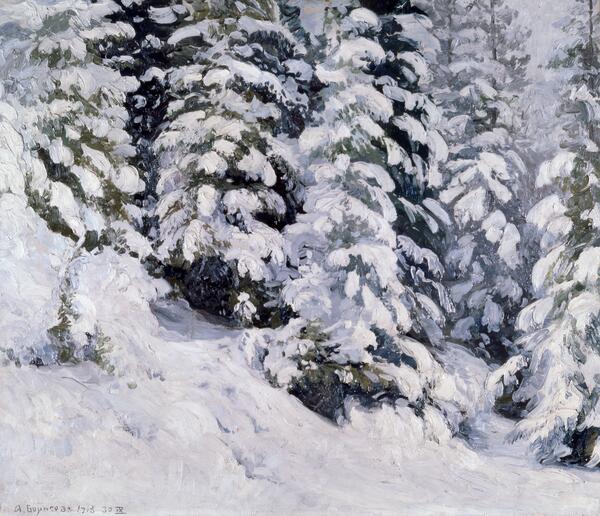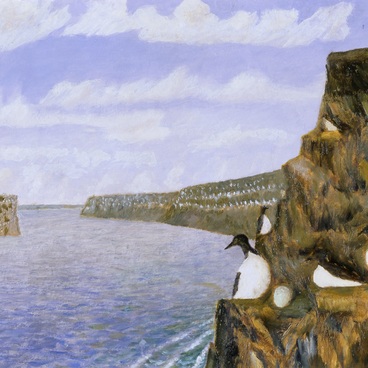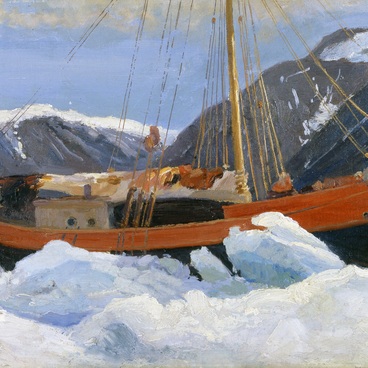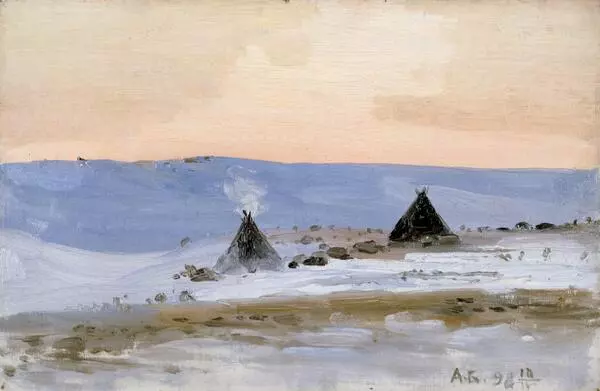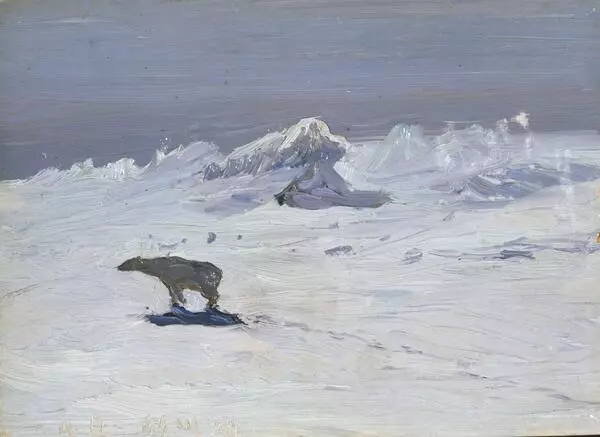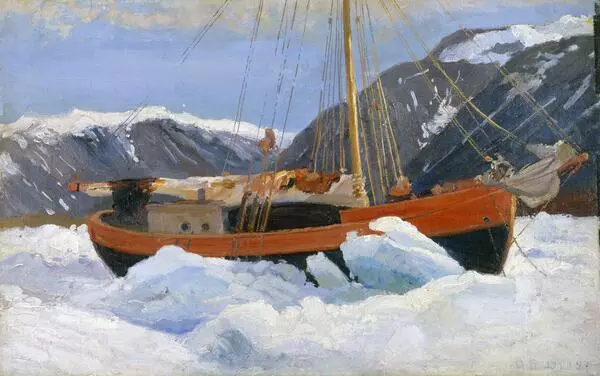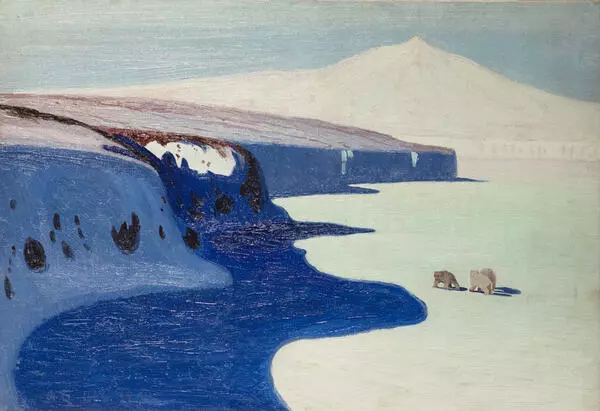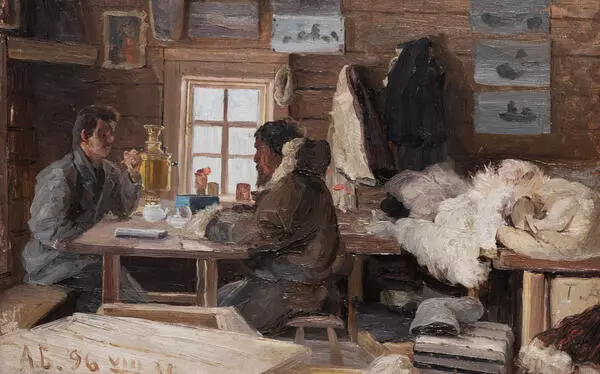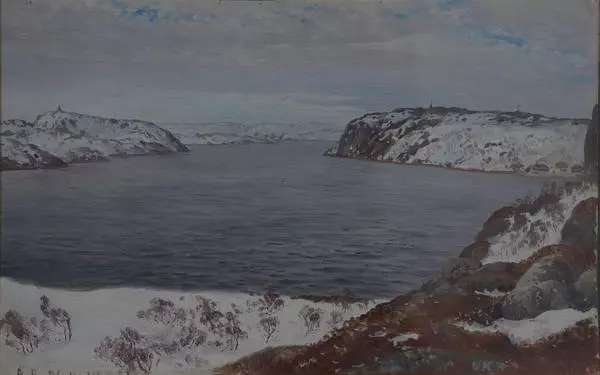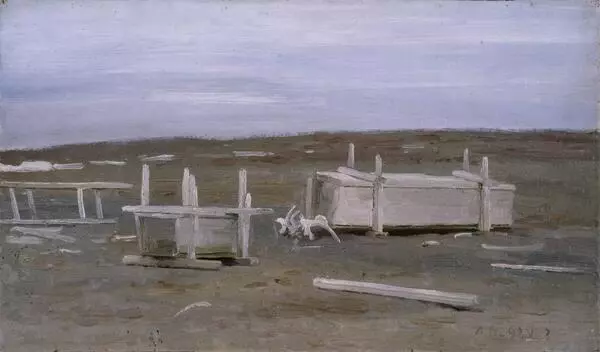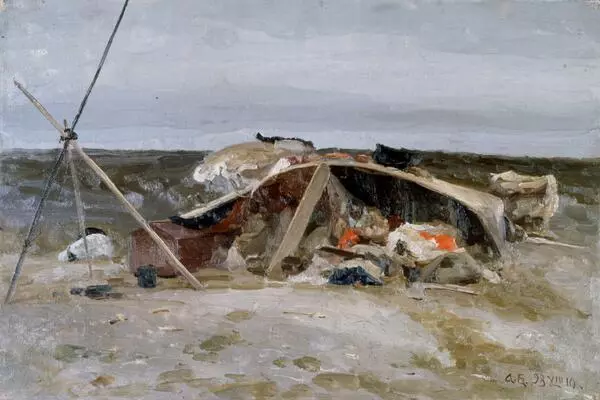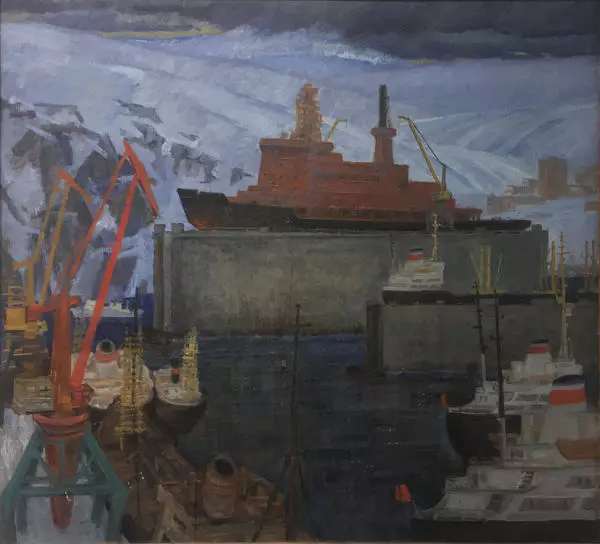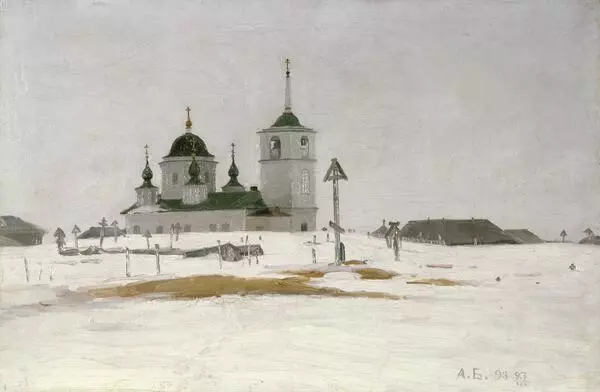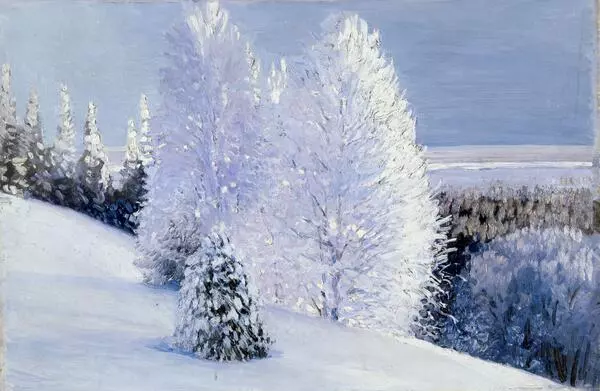The ‘forest’ pictorial cycle by Alexander Borisov has snow-covered spruces as its main motif. With free and easy brushstrokes, the artist builds the shapes of trees and branches powdered with soft snow. He avoids being too specific, listing too many unnecessary details, thus the feeling of integrity the painting provokes: we are able to see both the separate trees and the impassable wall they create. The Russian forest, tranquil and unique, is standing majestically before the viewer. The artistic effect of the ‘forest cycle’ resembles that of the ‘polar cycle’, maybe because of the splendour and solemnity of the scenery.
In his diary, Borisov wrote: ‘Looking at those centenarian pines and spruces, I often remember Ivan Shishkin. Their silhouettes were so bizarre, so whimsical! It is terribly cold here, so nature covered them with a thick, snowy, oddly shaped cloak. After all the snowstorms, the snow layer becomes so dense that it stays on the trunks and branches until the sun starts shining, awakening to life those dormant giants. By golly, sometimes, going through a thick forest at night, you get a feeling of being in an enormous ancient temple filled with huge marble statues.’
Depicting snow is one of the most difficult challenges in art. Karl Pavlovich Bryullov, a famous Russian classicist artist, used to say: ‘Whatever you do to paint the snow, you’ll end up with a picture of spilled milk.’ However, Alexander Borisov manages to achieve his goal, that is, depict the essence of the snow-buried Russian North. Following Arkhip Kuindzhi, his celebrated mentor, Borisov seeks to synthesize the landscape, make it into a generalized representation of the region.
Winter Forest. In the Thick of the Forest shows the snow in a new, poetic way. Here it is, fluffy and rich, bending down the branches with its white weight. We see spreading spruces growing from large, magnificent banks of snow. Silence reigns in this realm of white and green, and not a sound is heard.
In his diary, Borisov wrote: ‘Looking at those centenarian pines and spruces, I often remember Ivan Shishkin. Their silhouettes were so bizarre, so whimsical! It is terribly cold here, so nature covered them with a thick, snowy, oddly shaped cloak. After all the snowstorms, the snow layer becomes so dense that it stays on the trunks and branches until the sun starts shining, awakening to life those dormant giants. By golly, sometimes, going through a thick forest at night, you get a feeling of being in an enormous ancient temple filled with huge marble statues.’
Depicting snow is one of the most difficult challenges in art. Karl Pavlovich Bryullov, a famous Russian classicist artist, used to say: ‘Whatever you do to paint the snow, you’ll end up with a picture of spilled milk.’ However, Alexander Borisov manages to achieve his goal, that is, depict the essence of the snow-buried Russian North. Following Arkhip Kuindzhi, his celebrated mentor, Borisov seeks to synthesize the landscape, make it into a generalized representation of the region.
Winter Forest. In the Thick of the Forest shows the snow in a new, poetic way. Here it is, fluffy and rich, bending down the branches with its white weight. We see spreading spruces growing from large, magnificent banks of snow. Silence reigns in this realm of white and green, and not a sound is heard.

